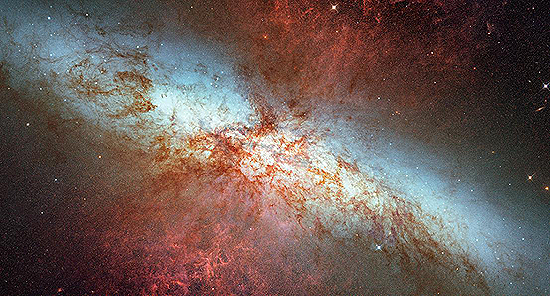
2014 marks the 25th year that the NASA/ESA Hubble Space Telescope has been in orbit - Hubble will officially turn 25 on April 24, 2015. The veteran observatory has revolutionized our view of the cosmos over the past quarter century where no celestial target is hidden from its unblinking 2.4 meter diameter mirror. From galaxies to galactic clusters and asteroids to exoplanets, Hubble's new imagery always generates huge interest. It is our planet's window to the universe.
Like the 24 years that have come before, Hubble's 25th year has been one full of stunning imagery and outstanding science, so let's take a look back over the past 12 months at some of the stand-out moments* from this historic mission.
*This Top 10 represents a tiny fraction of Hubble's prolific year and was chosen by the Discovery News editorial team and weighed against website traffic. For all of Hubble's mind-blowing observations, be sure to browse Hubblesite.org and the Space Telescope Science Institute homepage.
10. Galactic Gore
First up is a scene that combined Hubble data with NASA's Chandra X-ray space telescope - a cosmic 'bloodbath.' In this freeze frame of a particularly violent galactic encounter, a galaxy called ESO 137-001 drifted into the heart of the galactic cluster Abell 3627. Hubble and Chandra had basically witnessed a galactic blender rip ESO 137-001 to shreds.
9. A Doomed Asteroid
After its discovery in 2013 by ground based telescopes, asteroid P/2013 R3 quickly became something of a mystery. It was a space rock, in the asteroid belt between Mars and Jupiter, that was slowly breaking apart. It was interesting enough that Hubble mission managers decided to slew the telescope around for a closer look. Sure enough, after watching the pieces of asteroid drift apart, Hubble confirmed that the asteroid hadn't hit anything, only that it had mysteriously broken up. So what happened? Astronomers think that the asteroid was sped up by radiation from the sun, causing it to literally fall apart as the angular momentum flung loosely-bound chunks of asteroid into space.
8. Insights to Seyfert Galaxies
It's hard to take your eyes off the delicate spiral structure of this Hubble observation of the centre of the galaxy NGC 1433, an active galaxy known as a "Seyfert galaxy." Located around 32 million light-years away, the supermassive black hole in the core of NGC 1433 is voraciously consuming matter, causing the active galactic nucleus to shine bright.
7. An Eye in the Storm
It's as simple as it is beautiful - the shadow of Jupiter's moon Ganymede falling right on top of the gas giant's raging Great Red Spot. It's celestial serendipity at its finest!
6. Dark Cloud of Creation
This dark cloud may look eerie and foreboding, but it is actually a smorgasbord of stellar phenomena. It is a cocoon of gas and dust that is gradually birthing stars, and the bright reflection nebula (lower left) that is illuminated by a flurry of adolescent stars. [More at Hubble]
5. Galactic Pearls
While observing galactic superclusters for arcs created by the clusters' immense gravity distorting the light from distant galaxies (a project called Frontier Fields that uses gravitational lensing to superboost Hubble's magnification of distant regions of the universe), astronomers stumbled across this oddity. Looking like a string of pearls on a necklace between two colliding galaxies, it is over 100,000 light years long and is thought to be a short-lived feature that rises from galactic mergers.
4. Primordial Galaxies
Wherever Hubble looks, no matter how "empty" a portion of space appears to be, distant galaxies lurk. In this observation, the space telescope peered deep into the outermost reaches of the universe to look at the detail of two primordial galaxies billions of light-years away. Called Zw I 136, the pair (left) don't appear to conform to a well-ordered spiral shape. They are instead gravitationally interacting, pulling at one another's stars. [More at Hubble]
3. Proto-Exoplanetary Disks
Seeking out distant galaxies is one thing, but trying to track down the presence of exoplanets is quite another. Often lost in the glare of their parent stars, exoplanets can be hard to image. But Hubble has turned into quite the exoplanet hunter. This year, however, Hubble has gone a step further - surveying stars for their exoplanet forming dusty disks that existed before the alien worlds have even started to form.
2. Supernova!
In January this year, a supernova erupted in neighbouring galaxy M82 - the closest supernova to blow in recent history. Soon after the initial flash was reported, plans were afoot for a Hubble observational campaign, resulting in some outstanding imagery of stellar death in our intergalactic back yard. [More at Hubble]
1. Next-Gen Deep Field
Yes, it's the Hubble Deep Field...actually, no, it's the Hubble ULTRA Deep Field with an added layer of awesome - ultraviolet data from some of the youngest and normally obscured stars. By staring deep into a not-particularly-interesting region of space, the HDF became famous for the rich variety of distant galaxies we wouldn't be able to see without the help of Hubble. Now, in 2014, we have a next generation version of the same scene, reminding us just how rich and infinitely beautiful our vast universe really is.
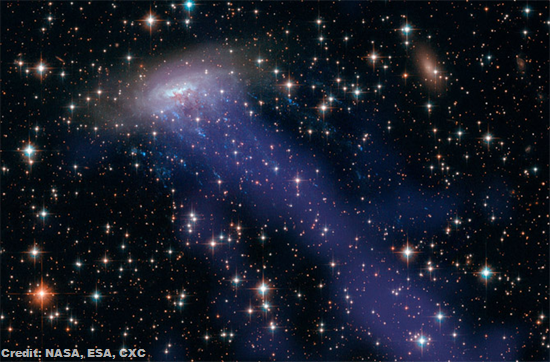


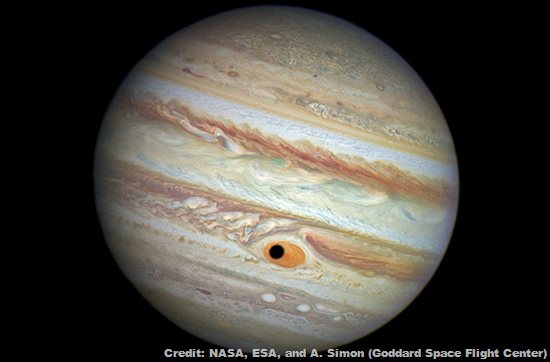
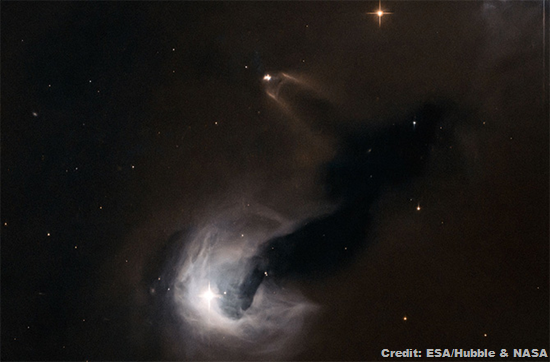
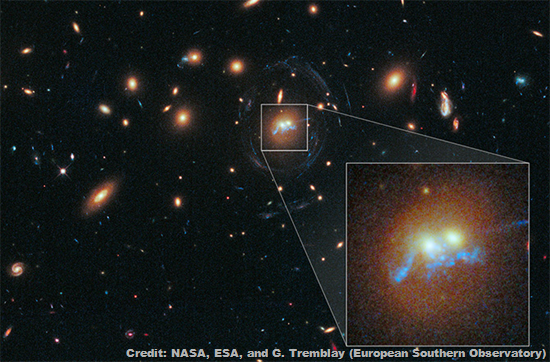
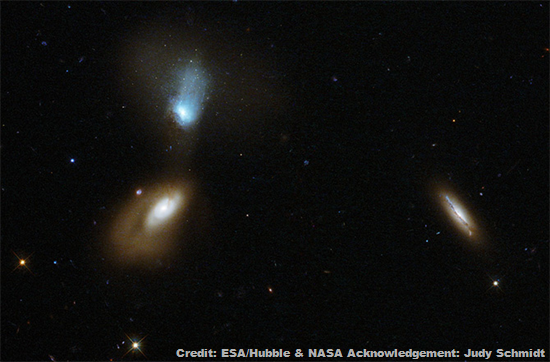
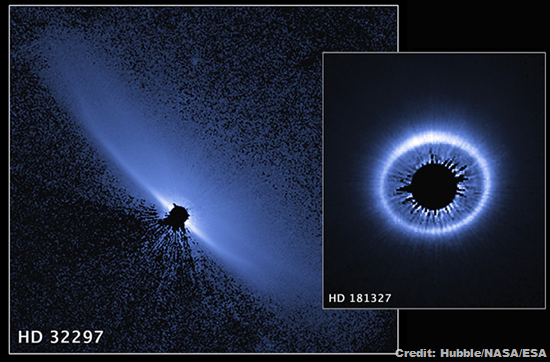
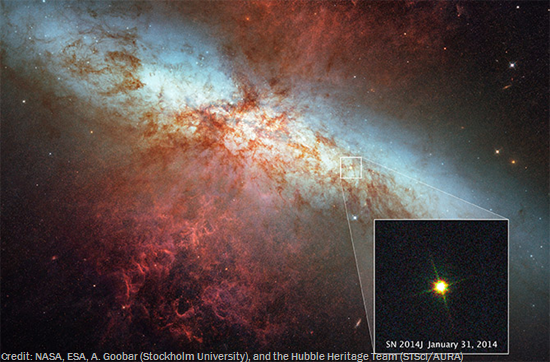
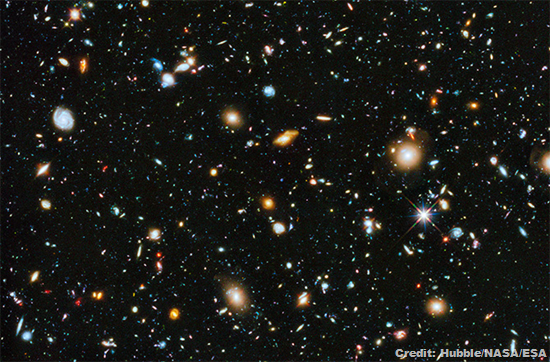
No comments:
Post a Comment
Please adhere to proper blog etiquette when posting your comments. This blog owner will exercise his absolution discretion in allowing or rejecting any comments that are deemed seditious, defamatory, libelous, racist, vulgar, insulting, and other remarks that exhibit similar characteristics. If you insist on using anonymous comments, please write your name or other IDs at the end of your message.